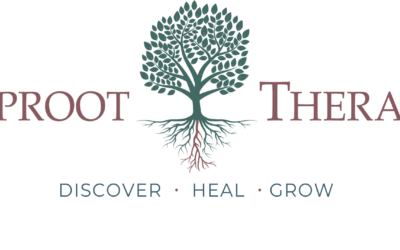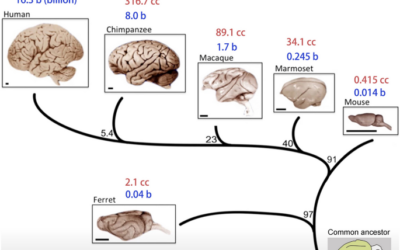The Role of Neural Networks in Lifespan Integration

At the heart of Lifespan Integration therapy is the understanding that the brain is a complex, interconnected network of neural pathways and circuits. These neural networks are formed through our experiences, beginning in utero and continuing throughout our lifespan.
When we experience trauma or adverse life events, especially in childhood, it can disrupt the normal integration of these neural networks. Traumatic experiences can become “stuck” or frozen in time, unable to be processed and integrated into the larger narrative of our life story.
These unintegrated experiences can then continue to shape our perceptions, emotions, and behaviors in the present, often in ways that are maladaptive or distressing. We may find ourselves reacting to current stressors as if we were still in the original traumatic situation, without conscious awareness of the connection.
Lifespan Integration aims to heal these disrupted neural networks by promoting integration on multiple levels: integration of memory, emotion, and bodily sensation; integration of past and present experiences; and integration of the different parts or aspects of the self.
Book with a Lifespan Integration Therapist Here
Other Articles on Lifespan Integration
Lifespan Integration and Memory Reconsolidation
One of the key mechanisms through which Lifespan Integration is believed to work is memory reconsolidation. Memory reconsolidation refers to the process by which existing memories can be modified or updated with new information.
Research has shown that when we recall a memory, it becomes temporarily unstable and malleable. In this state, the memory can be modified or reconsolidated with new emotional and sensory information. This process is believed to underlie the effectiveness of many trauma-focused therapies, including LI.
In LI therapy, the timeline approach and specific protocols are designed to activate and reconsolidate traumatic memories in a gradual, titrated way. By revisiting these memories in a safe, supportive context, and linking them to more adaptive experiences and perspectives, LI helps the brain to “rewrite” the traumatic script and create a more coherent, integrated narrative.
How Lifespan Integration Helps Resolve Traumatic Experiences
Lifespan Integration resolves traumatic experiences by targeting the underlying neural networks and patterns that maintain post-traumatic symptoms. By guiding clients to access and integrate these experiences in a gentle, titrated way, LI helps to rewire the brain for greater resilience and adaptability.
Some of the specific ways that LI helps to resolve trauma include:
- Desensitization: By revisiting traumatic memories in a safe, controlled way, LI helps to desensitize the emotional and physiological reactivity associated with these memories. Over time, the memories lose their charge and become less triggering.
- Recontextualization: LI helps clients to recontextualize traumatic experiences within the larger narrative of their life story. By linking these experiences to more positive, adaptive experiences and perspectives, LI helps to create a more balanced, integrated understanding of the self and the world.
- Embodiment: LI places a strong emphasis on the bodily experience of trauma and healing. By guiding clients to tune into their bodilysensations and experiences during the therapy process, LI helps to promote a deep sense of embodiment and integration. Clients learn to feel safe and grounded in their bodies, even in the face of difficult emotions or memories.4. Empowerment: LI empowers clients to access their own innate healing capacities and resources. By trusting in the wisdom of the body and the natural unfolding of the healing process, LI helps clients to develop a greater sense of agency, resilience, and self-trust.
The Importance of the Timeline in Lifespan Integration
The timeline is a central component of Lifespan Integration therapy. It serves as a container and roadmap for the integration process, helping clients to access and link together different experiences and memories across their lifespan.
In LI, the timeline is not just a linear chronology of events, but a felt sense of the flow and unfolding of one’s life story. By visualizing and embodying this story, from birth to the present moment, clients can start to create a more coherent, integrated sense of self.
The timeline also helps to contextualize traumatic experiences within the larger arc of one’s life. By seeing these experiences as part of a larger story, rather than as isolated, defining events, clients can start to reframe their understanding of themselves and their past.
Throughout the LI process, the timeline is revisited and refined, as new memories and insights emerge and are integrated. Over time, the timeline becomes a powerful tool for self-understanding, self-compassion, and self-transformation.
Lifespan Integration and Neuroplasticity
Neuroplasticity refers to the brain’s ability to change and reorganize itself in response to experience. This capacity for change is what makes healing and transformation possible, even in the wake of severe trauma or adversity.
Lifespan Integration leverages the brain’s neuroplasticity by providing new, corrective experiences that can help to rewire neural networks and patterns. By accessing and reconsolidating traumatic memories in a safe, supportive context, LI helps to create new neural pathways that are more adaptive and resilient.
Research has shown that the kind of integrative, embodied processing that occurs in LI therapy can lead to measurable changes in the brain. Studies using brain imaging techniques have found that LI can help to regulate overactive stress response systems, promote the growth of integrative fibers in the brain, and increase the connectivity between cognitive, emotional, and sensory regions.
These neuroplastic changes are what allow for lasting, transformational healing. By working with the brain’s innate capacity for change and growth, LI offers a powerful pathway to recovery and resilience.
Book with a Lifespan Integration Therapist Here
Other Articles on Lifespan Integration
Bibliography
Balkus, K. S. (2012). Lifespan Integration effectiveness in traumatized women [Doctoral dissertation, Northcentral University]. ProQuest Dissertations and Theses Global.
Binet, E. P., Tarquinio, C., & Tarquinio, P. (2016). Lifespan Integration therapy for child sexual abuse: A qualitative analysis of the clients’ perception and experience of treatment. Journal of Child Sexual Abuse, 25(6), 614-634. https://doi.org/10.1080/10538712.2016.1191655
Hu, E., Gao, J., Rashid, R., Li, Z., & Ding, L. (2019). The effectiveness of Lifespan Integration therapy for PTSD: A case report. SAGE Open Medical Case Reports, 7, 2050313X19832647. https://doi.org/10.1177/2050313X19832647
Kaur, J. (2013). Lifespan Integration therapy with complex PTSD: A case study. International Journal of Psychotherapy, 17(1), 59-68. https://doi.org/10.36075/IJP.2013.17.1.59
Kwon, S., & Kim, S. (2021). The effectiveness of Lifespan Integration therapy on depressive symptoms and quality of life in patients with major depressive disorder. Journal of Affective Disorders, 282, 392-398. https://doi.org/10.1016/j.jad.2020.12.160
Pace, P. (2003). Lifespan Integration: Connecting ego states through time (1st ed.). Self-published.
Pace, P. (2012). Lifespan Integration: The Basics. Unpublished manuscript.
Steele, K., Boon, S., & Van der Hart, O. (2016). Treating trauma-related dissociation: A practical, integrative approach. W. W. Norton & Company.
Thorpe, G. L. (2015). Lifespan Integration efficacy: A mixed methods multiple case study [Doctoral dissertation, Sofia University]. ProQuest Dissertations and Theses Global.
Thorpe, G. L., & Jeppsen, B. (2017). Lifespan Integration therapy for older adults with depression and anxiety: A preliminary study. Journal of Psychotherapy Integration, 27(4), 536-542. https://doi.org/10.1037/int0000077
Other References:
American Psychological Association. (2017). Clinical practice guideline for the treatment of posttraumatic stress disorder (PTSD) in adults. American Psychological Association.
Ogden, P., & Fisher, J. (2015). Sensorimotor psychotherapy: Interventions for trauma and attachment. W. W. Norton & Company.
Siegel, D. J. (2012). The developing mind: How relationships and the brain interact to shape who we are (2nd ed.). Guilford Press.
Van der Kolk, B. A. (2014). The body keeps the score: Brain, mind, and body in the healing of trauma. Viking.
Types of Therapy




0 Comments